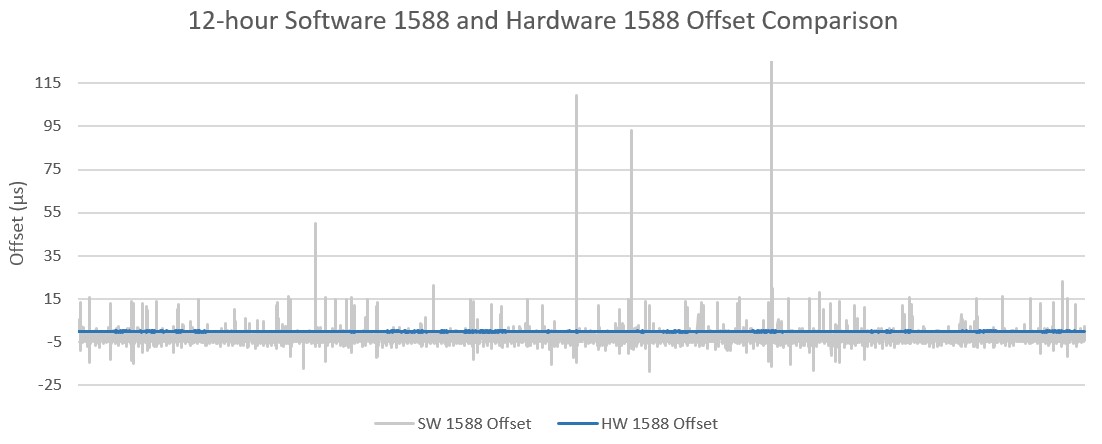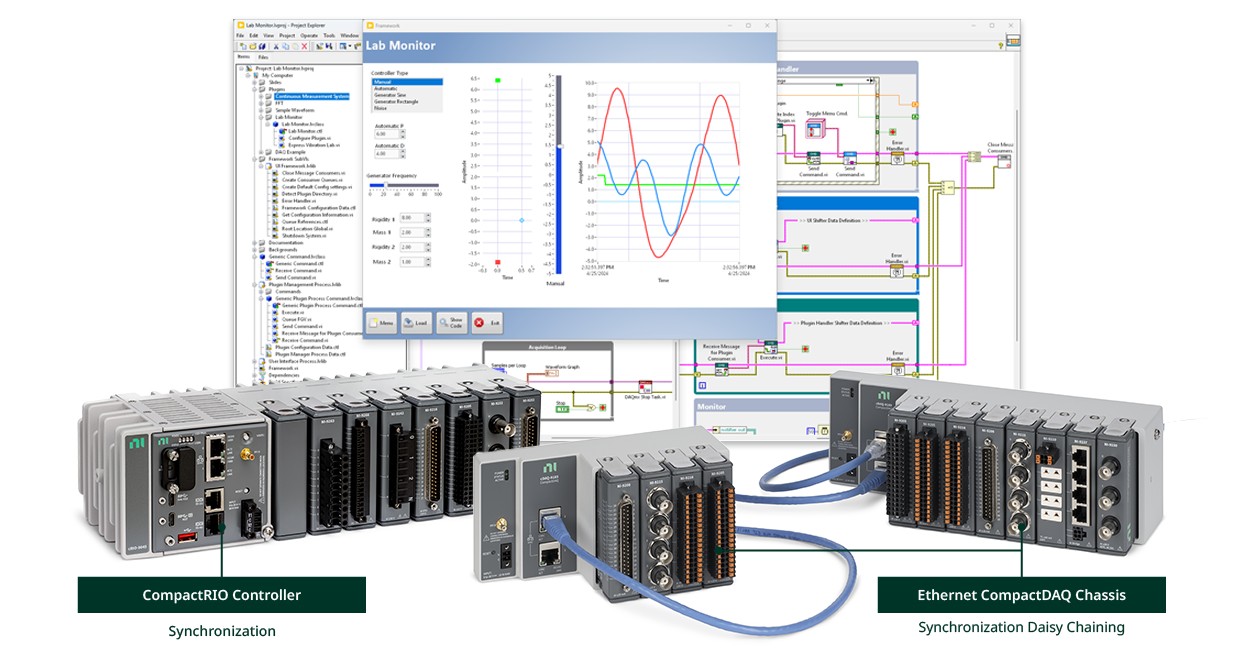Advanced Synchronization Technologies for CompactRIO Controllers
Overview
NI CompactRIO Controllers are designed with advanced synchronization capabilities. With support for both hardware timed IEEE 1588 Precision Time Protocol (PTP) and Time Sensitive Networking, these controllers are ideal for a wide range of industrial and machine vision applications.
Contents
Hardware Timed IEEE 1588 PTP
IEEE 1588 is a synchronization protocol implemented over Ethernet networks. It allows for many nodes on a network to synchronize their clocks with a high level of accuracy. The protocol defines a “Best Master Clock” algorithm where each master periodically messages to synchronize the slave nodes’ time with the master’s.
The accuracy of synchronization that can be achieved is dependent on the jitter associated with the clock’s timestamp. When the timestamping is implemented in software, systems can achieve sub-millisecond synchronization. When the timestamping is implemented in hardware, systems can achieve submicrosecond synchronization.
Figure 1. Comparison of software-timed synchronization vs hardware-timed synchronization using IEEE 1588 PTP.
CompactRIO Controllers that have synchronization enabled take 1588 synchronization a step further by allowing the onboard user-programmable FPGA’s top-level clock to be synchronized with the network clock. With this architecture, you can synchronize custom I/O on the FPGA to the master clock (see Figure 2). This is useful to synchronize system components that may not have 1588 support such as a PLC or USB3 Vision camera.
Finally, these models support IEEE 802.1AS and IEEE 1588, therefore it can act as bridge between fully Time Sensitive Networks and more traditional IEEE 1588 networks. This ability to synchronize devices across multiple technologies provides maximum system flexibility.
Time Sensitive Networking
Time Sensitive Networking (TSN) is the evolution of standard Ethernet to include time based synchronization, traffic scheduling, and system configuration. Traffic scheduling and system configuration enable deterministic communication over Ethernet by allowing users to schedule time critical data across a network.
An important aspect of TSN is the convergence of time critical traffic and other Ethernet traffic. Because TSN is a feature of the Ethernet standard the new capabilities of time synchronization and deterministic communication run over the same network as all other network communication. This means a single port on the CompactRIO controller can be performing deterministic communication for control loops while also updating remote UI terminals and supporting file transfer.
TSN is a key enhancement for industrial applications, such as process and machine control, where low communication latency and minimal jitter are critical to meeting closed-loop control requirements. With the ability to schedule traffic across an Ethernet network via system configuration software, users can reliably send both deterministic data and best effort data across a shared Ethernet cable. Time based synchronization over Ethernet also minimizes cabling traditionally found in physical systems test and monitoring applications leading to a cleaner and more cost-effective solution. Together with several other Industrial Internet Consortium (IIC) members, NI has been hard at work to bring TSN to life as the first fully open, standard, and interoperable way to fulfill these requirements.
Take advantage of TSN today with the CompactRIO Controller with TSN and the Ethernet CompactDAQ Chassis with TSN.
Figure 2. TSN enabled National Instruments products. (Industrial Controller and Cisco IE 4000 are no longer available.)

